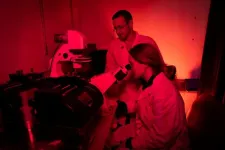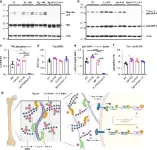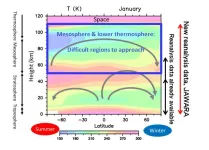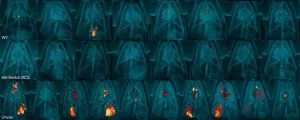(Press-News.org) Weill Cornell Medicine researchers have found that pharmacy benefit managers (PBMs)—organizations that negotiate access to medicines for most patients in the United States—steer patients to use their own pharmacies. However, these pharmacies appear less used in Medicare than in other market segments. These PBMs are part of integrated health care conglomerates that own insurance companies and pharmacies, which may create conflicts of interest.
The study, published Jan. 10 in JAMA Health Forum, found that in 2021 a third of all Medicare Part D pharmacy spending and almost 40% of specialty drug spending within Medicare Part D was through pharmacies owned by the four largest PBMs: CVS, UnitedHealth Group, Cigna or Humana. However, this represents a far lower market share in Medicare than the nearly two-thirds national market share noted by a Federal Trade Commission’s 2024 report. The findings may help guide future policy decisions on how these entities are regulated.
"It is striking that, on average, these companies have significantly lower market share in Medicare than the national estimates suggest,” said the study’s lead author Dr. Pragya Kakani, an assistant professor of population health sciences at Weill Cornell Medicine. “For high-cost specialty drugs, these pharmacies have almost half the market share in Medicare which is still lower than that observed across all other payer segments nationally.”
Dr. Kakani believes one reason for the reduced market share of these pharmacies in Medicare could be due to the Center for Medicare and Medicaid Services’ “any willing pharmacy” rules that ensure patients have access to their prescriptions at any pharmacy willing to meet the conditions set by Medicare Part D.
“While we don’t test this directly, our work raises the possibility that these rules may be powerful in preventing PBM firms from getting huge market share," she said. Outside of Medicare Part D, insurers generally have more leeway to exclude certain pharmacies from their networks, meaning patients have fewer choices about where they can pick up their prescriptions.
“However, despite Medicare's ‘any willing pharmacy’ rules, insurers integrated with PBMs are still capable of steering a substantial portion of their Medicare Part D plan enrollees to their own pharmacies,” noted senior author on the study Dr. Amelia Bond, associate professor of population health sciences at Weill Cornell Medicine. This is especially true among some high-cost specialty drugs. On average, Medicare patients used their own PBM’s pharmacies at nearly 20 percent higher rates than what would be expected without steering.
For example, for pulmonary arterial hypertension, idiopathic pulmonary fibrosis and multiple sclerosis, PBM-owned pharmacies captured over 60% market share in Medicare. “Because there is a lot of variation by disease area in terms of the prevalence of these pharmacies, policymakers concerned about this issue should pay special attention to drug classes where these PBM-owned pharmacies are most used.”
The market power of PBM pharmacies and firms’ ability to steer patients to their own pharmacies may impact costs, access to independent pharmacies and patient experience. Thus, some states may consider expanding protections like “any willing pharmacy” in general commercial markets.
"Steering can amplify the potential harms as well as possibly potential benefits of this type of integration, justifying further research in this area," Dr. Kakani said. Dr. Kakani, Dr. Bond, and their research team will continue examining some of these issues, focusing on the quality of care PBM-owned pharmacies provide, including access, timely filling of prescriptions, patient adherence to treatment plans and pricing.
END
Medicare rules may reduce prescription steering
2025-01-10
ELSE PRESS RELEASES FROM THIS DATE:
Red light linked to lowered risk of blood clots
2025-01-10
Humans and mice exposed to long-wavelength red light had lower rates of blood clots that can cause heart attacks, lung damage and strokes, according to research led by University of Pittsburgh School of Medicine and UPMC surgeon-scientists and published today in the Journal of Thrombosis and Haemostasis.
The findings, which need to be verified through clinical trials, have the potential to reduce blood clots in veins and arteries, which are leading causes of preventable death worldwide.
“The light we’re exposed to can change our biological processes and change ...
Menarini Group and Insilico Medicine enter a second exclusive global license agreement for an AI discovered preclinical asset targeting high unmet needs in oncology
2025-01-10
This is the second asset Menarini Group has inlicensed from Insilico Medicine which was discovered through their generative AI platform, similar to the preclinical stage KAT6 inhibitor (MEN2312) licensed a year ago and which advanced rapidly into the clinical phase.
Under the agreement, Menarini Group will be granted global rights to develop and commercialize the asset. The deal includes a $20m upfront payment, and the combined value, including all development, regulatory, and commercial milestones, is over $550 million, followed by tiered royalties.
FLORENCE, Italy and CAMBRIDGE, Mass., January 10, 2025 : The Menarini Group ("Menarini"), ...
Climate fee on food could effectively cut greenhouse gas emissions in agriculture while ensuring a social balance
2025-01-10
Agriculture accounts for 8 percent of all greenhouse gas (GHG) emissions in Germany. “However, emissions within this sector, could be reduced by 22.5 percent or over 15 million tonnes of GHG annually, if the social cost of carbon were reflected in food prices,” says Julian Schaper, guest scientist at PIK and lead author of the study published in the journal Food Policy. In the Federal Climate Change Act passed in 2019, the government set itself the goal of reducing annual emissions from the current 62 million tonnes to 56 Mt GHG by 2030.
The social cost of carbon is an estimate of the economic damages that would result from emitting one additional tonne of carbon into the ...
Harnessing microwave flow reaction to convert biomass into useful sugars
2025-01-10
Fukuoka, Japan—Researchers at Kyushu University have developed a device that combines a catalyst and microwave flow reaction to efficiently convert complex polysaccharides into simple monosaccharides. The device utilizes a continuous-flow hydrolysis process, where cellobiose—a disaccharide made from two glucose molecules—is passed through a sulfonated carbon catalyst that is heated using microwaves. The subsequent chemical reaction breaks down cellobiose into glucose. Their results were published in the journal ACS Sustainable Chemistry & Engineering.
Converting biomass into ...
Unveiling the secrets of bone strength: the role of biglycan and decorin
2025-01-10
A recent study has uncovered the essential roles of two proteoglycans, biglycan and decorin, in maintaining bone mass, water retention, and bulk/in situ mechanical competence. Through the use of genetically modified mouse models, the research demonstrates that while biglycan plays a predominant role in preserving bone structure and toughness, decorin significantly contributes to the bone’s mechanical properties. These findings reveal how these proteins interact with water and other matrix components to regulate the mechanical ...
Revealing the “true colors” of a single-atom layer of metal alloys
2025-01-10
Researchers Ibuki Taniuchi, Ryota Akiyama, Rei Hobara, and Shuji Hasegawa of the University of Tokyo have demonstrated that the direction of the spin-polarized current can be restricted to only one direction in a single-atom layer of a thallium-lead alloys when irradiated at room temperature. The discovery defies conventions: single-atom layers have been thought to be almost completely transparent, in other words, negligibly absorbing or interacting with light. The one-directional flow of the current observed in this study makes possible functionality beyond ...
New data on atmosphere from Earth to the edge of space
2025-01-10
A team led by researchers at the University of Tokyo have created a dataset of the whole atmosphere, enabling new research to be conducted on previously difficult-to-study regions. Using a new data-assimilation system called JAGUAR-DAS, which combines numerical modeling with observational data, the team created a nearly 20-yearlong set of data spanning multiple levels of the atmosphere from ground level up to the lower edges of space. Being able to study the interactions of these layers vertically and around the globe could improve climate modeling and seasonal weather forecasting. There is also potential for interdisciplinary research between atmospheric scientists ...
Self-destructing vaccine offers enhanced protection against tuberculosis in monkeys
2025-01-10
PITTSBURGH, Jan. 10, 2025 – A self-destructing vaccine administered intravenously provides additional safety and protection against tuberculosis (TB) in macaque monkeys, suggests new University of Pittsburgh research published today in Nature Microbiology.
The in-built safety mechanisms circumvent the possibility of an accidental self-infection with weakened mycobacteria, offering a safe and effective way to combat the disease that was named as the deadliest of 2024 by the World Health Organization.
“Although the idea of intravenous vaccination with a live vaccine may sound scary, it was very ...
Feeding your good gut bacteria through fiber in diet may boost body against infections
2025-01-10
The group of bacteria called Enterobacteriaceae, including Klebsiella pneumoniae, Shigella, E.coli and others, is present at low levels as part of a healthy human gut microbiome. But at high levels - caused for example by increased inflammation in the body, or by eating contaminated food - these bugs can cause illness and disease. In extreme cases, too much Enterobacteriaceae in the gut can be life-threatening.
Researchers have used computational approaches including AI to analyse the gut microbiome composition of over 12,000 people across 45 countries from their stool samples. They found that a person’s microbiome ‘signature’ can predict ...
Sustainable building components create a good indoor climate
2025-01-10
Whether it’s the meeting room of an office building, the exhibition room of a museum or the waiting area of a government office, many people gather in such places, and quickly the air becomes thick. This is partly due to the increased humidity. Ventilation systems are commonly used in office and administrative buildings to dehumidify rooms and ensure a comfortable atmosphere. Mechanical dehumidification works reliably, but it costs energy and – depending on the electricity used – has a negative climate impact.
Against this backdrop, a team of researchers from ETH Zurich investigated a new approach to passive dehumidification of indoor spaces. Passive, in this context, means ...








